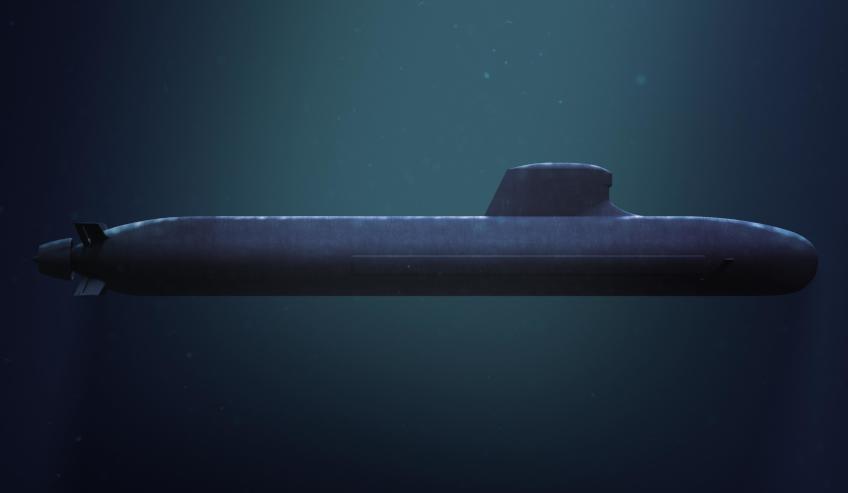Calls to bring in experienced project managers from outside Defence to oversee the SEA 1000 Future Submarine project have been rejected by the department.
To continue reading the rest of this article, please log in.
Create free account to get unlimited news articles and more!
Senator Rex Patrick, a former submariner and defence industry project manager, called on the government last month to bring in outside help to support the project, cautioning key milestones on the project have already been missed and could lead to a cost blowout.
"No disrespect is directed at the Admiral running the project. Just as you can't post an experienced project manager into the position of submarine Commanding Officer, you can't take a submarine Commanding Officer and place them in the position of a senior project manager," Patrick said.
Defence has hit back at its critics, offering its full support to the team leading the project in a lengthy statement.
"The Future Submarine Program is managed by an extremely experienced executive with more than 250 years of collective project management experience," the department said in a statement.
"The team assembled to manage the Future Submarine Project is led by Mr Stephen Johnson, General Manager Submarines, who is a highly accomplished program manager.
"Mr Johnson served as the Director of the Strategic Systems Program and had a major role in the design of the United States Virginia Class, as well as serving as program manager for the Seawolf Class. These are the most complex and advanced submarines available
"The program is led by Rear Admiral (RADM) Greg Sammut, the most senior submariner in Defence. RADM Sammut has applied his 34 years of experience as a Naval officer across a number of submarine capability management roles, including as Head Future Submarine Program since September 2013.
"RADM Sammut is building a high performance team of local and international experts to meet the many complex challenges associated with the design and delivery of the Future Submarine Program. The growing team comprises experts with experience in project management, platform and combat systems, legal, maritime industry and infrastructure, and is supported by highly experienced commercial advisers.
"Defence has also engaged a platform director with over 23 years of acquisition project management experience, including production, with a master's in mechanical engineering specialising in underwater acoustics and structural vibration. He also has the highest level of project management and systems engineering accreditation under the United States Defense Acquisition Workforce Improvement Act (DAWIA), in addition to high‑level accreditation in production environment.
"In addition, Defence has engaged a Combat System Director with over 28 years of service as a United States Naval Officer, including 21 years of submarine acquisition experience and 14 years of experience in submarine operations, who has a bachelor's in engineering and master's in business administration. He has attained the highest level of project management accreditation under the DAWIA, in addition to high level accreditation in systems engineering and business financial management. He also has a further 22 years of program management experience, including five years with a major defence manufacturing company."
Calls to bring in help from project managers from outside the defence industry came when it was revealed key documents form the Future Submarine Project's design and mobilisation contract are yet to be delivered. Under the design and mobilisation contract, signed on 30 September 2016, Defence and Naval Group were required to produce the Australian Industry Capability Plan and an Australian Steel Development and Qualification plan within five months of the contract signing.
RADM Sammut told Senate estimates that while Defence was previously on schedule in meeting all milestones for the design and mobilisation contract, the relevant parties fell behind in August last year.
"We're still working on the Australian Industry Capability Plan with Naval Group, and similarly with the study for the Australian development of the steel and so forth," RADM Sammut said.
"There have been some delays with the work that we want to do with Australian industry on the steel study."
RADM Sammut said the hold-up related to Australian steel companies implementing "appropriate security arrangements."
Senator Patrick is not the first in talking up the need for outside help. The Australian Strategic Policy Institute's 2011 Subaqueana australis - the future evolution of Australia’s submarines and its 2008 How to buy a submarine reports warned that expertise within defence was lacking.
"ASPI opined in its 2008 paper How to buy a submarine that the technical know-how within Defence seems insufficient for the task," the 2011 report said.
Naval Group was awarded the Future Submarine contract in 2016. The first stage of design of the Future Submarine, known as functional analysis, was completed on schedule in October 2017. At the fourth Submarine Science, Technology and Engineering Conference in Adelaide last year, Minister Pyne revealed the submarines will be 97 metres in length and 8.8 metres in diameter.
The next stage of design, known as feasibility studies, has commenced as planned, according to Defence. All 12 submarines will be built in Adelaide at Osborne.

 Login
Login







